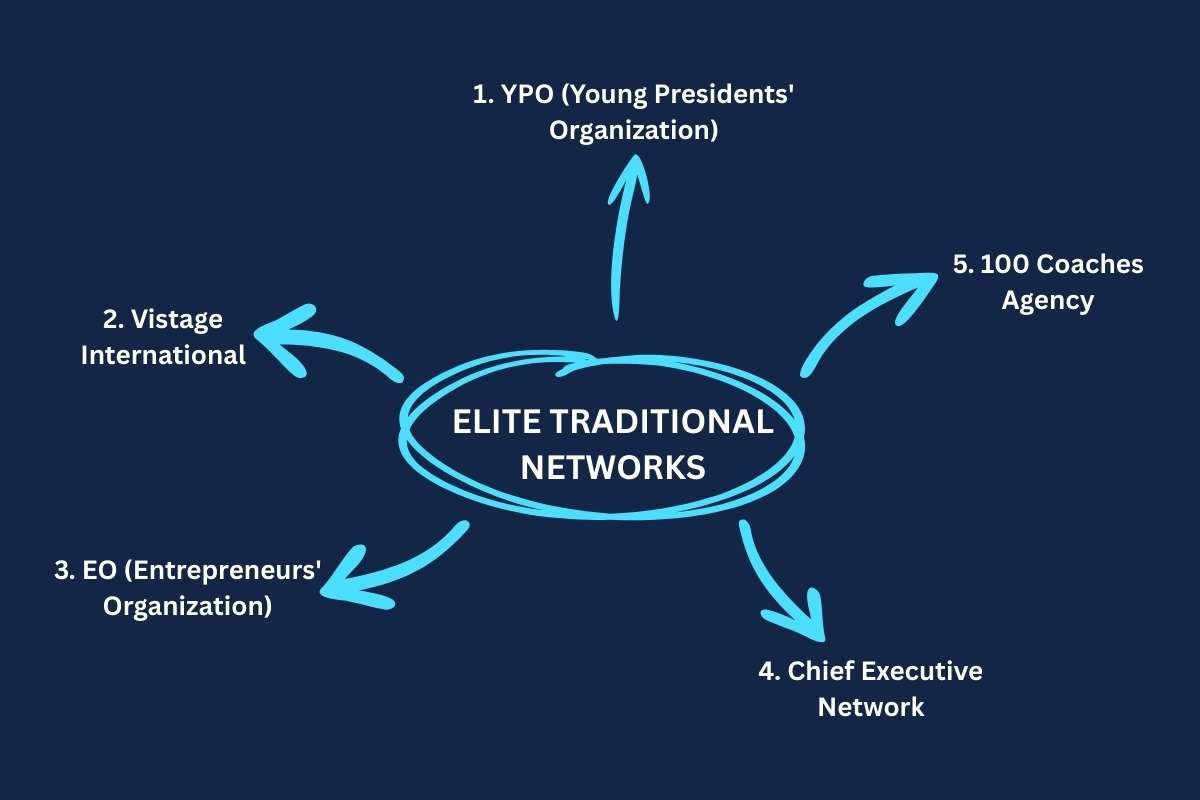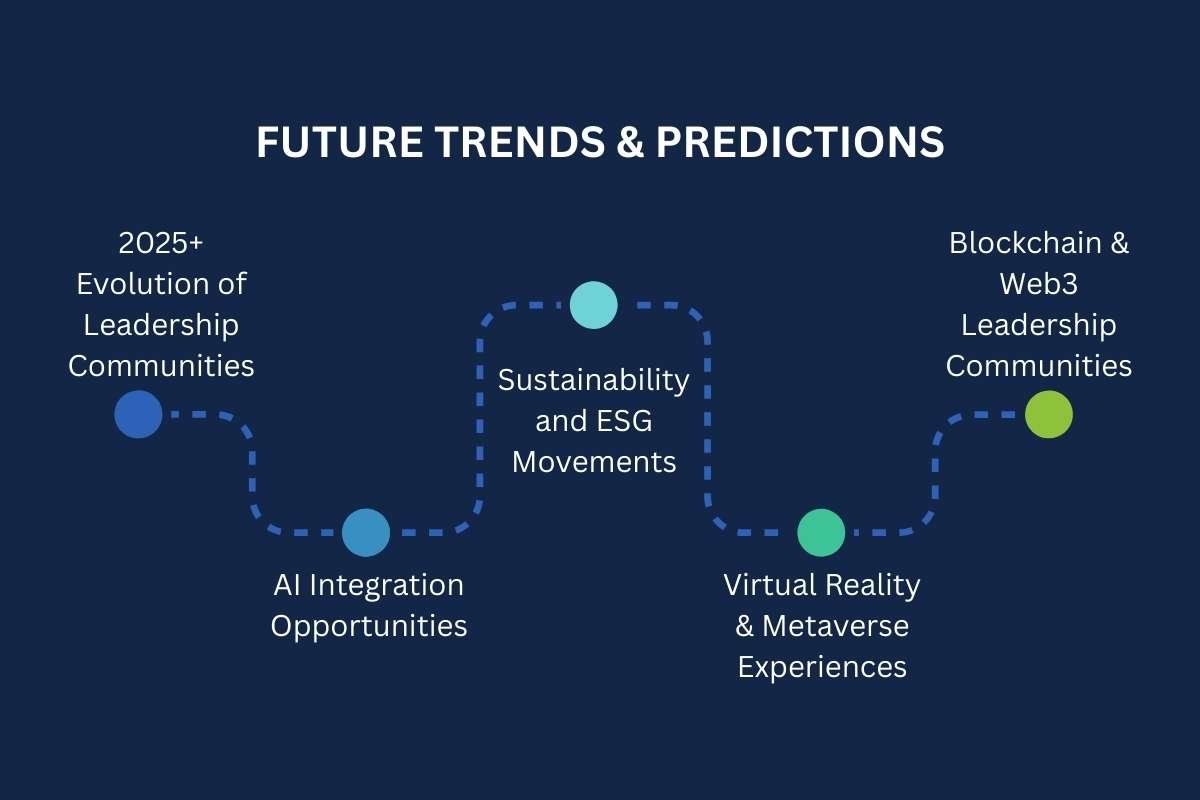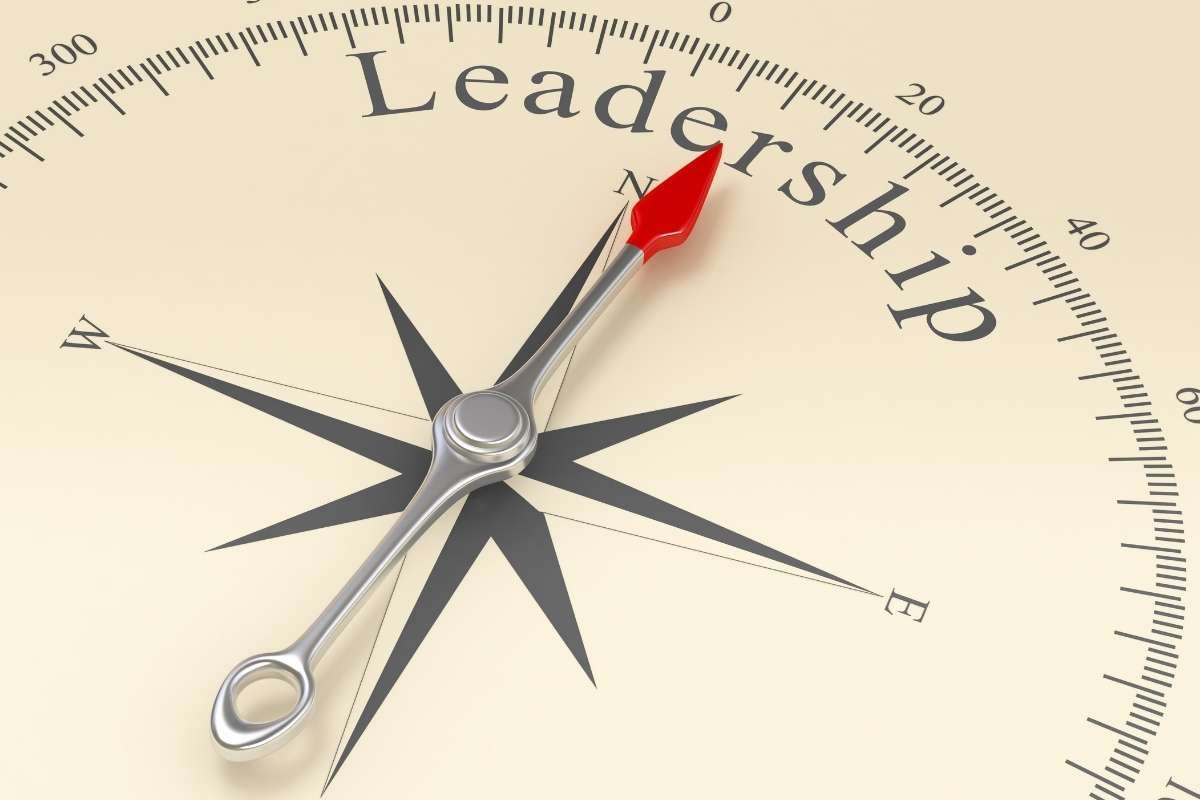Leadership grows strongest when rooted in shared experience, genuine trust, and diverse perspectives. We live in a world where choices feel overwhelming and leadership roles can be isolating. Finding spaces where people uplift one another makes all the difference. The best leadership communities stand out because they’re built on authentic human connections, thoughtful mentorship, and mutual growth.
These communities offer guidance grounded in people’s lived experiences. You’ll hear honest stories of wins and challenges. You’ll find mentors who’ve walked the path before you and peers who hold you accountable, honestly. Learning here is practical, personal, and often emotional. Trust forms the foundation, creating a space where voices matter, failures aren’t hidden, and growth happens together.
Instead of leading in silos, executives now seek out curated communities where they can share openly, gain feedback, and learn from others facing similar challenges. The right network acts as both a sounding board and a growth accelerator. However, not all leadership groups are created equal. Some provide real return on investment (ROI), while others fall short, offering surface-level networking with little depth. This article will discuss some of the best leadership communities in 2025 and help leaders make effective decisions.
I. The Leadership Community Selection Guide
Choosing the right community is as important as pursuing an MBA or coaching program. This decision framework flowchart helps you determine whether to join a traditional network, a digital-first platform, or an exclusive invite-only circle.
Here’s how leaders should evaluate options:

- Free vs Paid: Free communities offer accessibility but may lack depth and accountability. Paid networks, while costly, often deliver structured programming, mentors, and measurable impact. Our ROI comparison matrix shows that paid communities outperform in leadership growth by 40%.
- Virtual vs. Hybrid vs. In-Person: Virtual networks offer accessibility and global reach. Hybrid models combine digital with occasional retreats, offering balance. In-person groups bring deeper trust but require higher commitment.
- Technology Rating: Communities using advanced platforms (like AI-enhanced matching or integrated learning tools) score higher on engagement.
- Red Flags: Watch out for high fees, vague benefits, low engagement, or communities where “sales pitches” overshadow peer learning.
II. Elite Traditional Networks (the Established Giants)
These long-standing organizations remain among the best leadership communities because they have stood the test of time, consistently delivering measurable value to leaders across industries. Building on decades of experience, these networks thrive on trust, structure, and the ability to unite like-minded leaders.

1. YPO (Young Presidents’ Organization)
YPO connects over 30,000 CEOs across 130 countries, offering small, confidential forums where leaders share openly. Beyond global conferences and speaker events, its value lies in accountability and trust. This unique blend of global reach with intimate connections has earned it a reputation as one of the best leadership communities in the world. Members often describe YPO as a safe space for vulnerability, learning, and growth.
2. Vistage International
Vistage’s peer advisory model brings executives together in small, coach-led groups. Monthly sessions focus on solving challenges, improving decision-making, and building strength. Members frequently highlight the benefit of practical learning and honest discussions with peers who face similar pressures. Vistage’s structure ensures consistent growth, making it a trusted companion for executives committed to better leadership and stronger business outcomes.
3. EO (Entrepreneurs’ Organization)
EO provides a global platform for entrepreneurs to learn from one another through peer forums, regional events, and international summits. Members value its transparency culture, where successes and setbacks are openly shared. With over 18,000 members in 70 countries, EO helps entrepreneurs sharpen their business acumen while building lifelong friendships. This authentic, peer-driven model secures EO’s place among the best leadership communities for business owners worldwide.
4. Chief Executive Network
The Chief Executive Network specializes in CEO-only groups, organized by industry to ensure highly relevant discussions. Members benefit from tackling sector-specific challenges such as scaling, regulation, or competitive strategy. The confidential environment allows for candid conversations that lead to practical, immediately usable insights. By focusing intensely on industry alignment, this network creates meaningful exchanges and long-term partnerships that support high-level executives.
5. 100 Coaches Agency
100 Coaches is among the best leadership communities available today for those seeking elite mentorship and breakthrough leadership development. Founded by leadership expert Marshall Goldsmith, 100 Coaches is an exclusive community offering access to top-tier executive coaches. It prioritizes quality and transformation over scale, with members often reporting significant changes in business performance and personal growth. Leaders here gain continuous feedback, guidance, and exposure to global thought leadership.
III. Virtual-first & Digital Leadership Communities (the Future is Here)

Digital-first platforms have reshaped how leaders connect, making global collaboration more accessible. These networks have matured into the best leadership communities, offering flexibility without sacrificing depth.
6. Circle Community Leadership Networks
Circle powers modern leadership communities with customizable platforms designed for engagement. Leaders benefit from interactive discussions, live workshops, and networking spaces tailored to specific goals. Its flexibility allows communities to scale without losing intimacy. For executives who value tech-enabled connection, Circle offers a digital-first approach that feels dynamic and personal.
7. Leadership Circle Global
Leadership Circle Global combines assessment tools with virtual peer forums, giving leaders a structured way to measure and improve effectiveness. Members appreciate its data-driven approach, highlighting strengths and blind spots while encouraging accountability. The network is ideal for leaders who value evidence-based growth and continuous reflection, making it a standout among the best leadership communities for personal development.
8. Remote Leadership Collective
The Remote Leadership Collective specializes in challenges faced by distributed teams. Members, often from startups and remote-first organizations, share strategies on communication, productivity, and culture. With the rise of hybrid work, this group offers timely insights and practical resources. Leaders join to gain advice and connect with others navigating similar transitions to flexible, global workforces.
9. LinkedIn Leadership Accelerator
Since it integrates directly with LinkedIn’s ecosystem, the accelerator doubles as a career visibility tool, positioning it among the best leadership communities for modern professionals. Built within the world’s largest professional network, the LinkedIn Leadership Accelerator helps members grow thought leadership and strengthen influence. Through curated cohorts, workshops, and peer accountability, leaders sharpen their personal brand and management skills.
10. AI-Enhanced Leadership Matching Platforms
Emerging platforms use AI algorithms to match leaders with peers and mentors based on shared goals, personality, and expertise. This approach ensures connections go deeper than surface-level networking. Members benefit from personalized experiences, faster learning, and stronger relationships. While relatively new, these platforms point to the future of leadership growth, where technology enhances, not replaces, the human side of community.
IV. Industry-specific Leadership Networks (Specialized Expertise)

Industry-specific communities provide leaders with targeted knowledge, mentorship, and strategies tailored to their sector. For many executives, these networks are where technical expertise meets real-world leadership lessons.
11. Technology Leadership Networks (CTO Communities, TechStars)
Tech-focused leadership communities like CTO Forums and TechStars networks bring innovators together to solve fast-changing challenges. Members share insights on scaling products, AI integration, and cybersecurity. For technology executives, these groups offer mentorship from seasoned founders and investors. The mix of entrepreneurial spirit and technical depth places them among the best leadership communities for the digital economy.
12. Healthcare Leadership Academy
Healthcare leaders face unique pressures, from patient care standards to hospital digital transformation. The Healthcare Leadership Academy provides executives with tools for understanding reforms, advancing telemedicine, and driving systemic change. Members collaborate to build more resilient, compassionate systems. It’s a space where industry-specific expertise meets human-centered leadership, helping executives balance efficiency with empathy in one of society’s most critical fields.
13. FinTech Leadership Forum
For finance professionals charting the future of money, this community ranks as one of the best leadership communities for specialized insight. The FinTech Leadership Forum brings executives together to discuss regulation, digital banking, blockchain, and cryptocurrency in a disruption-defined sector. Leaders share strategies for navigating compliance while driving innovation. The forum emphasizes peer learning, offering real-world solutions to complex issues.
14. Non-Profit Leadership Exchange
Running a non-profit requires balancing limited resources with big missions. The Non-Profit Leadership Exchange helps directors and executives develop fundraising strategies, measure impact, and improve board governance. The exchange’s collaborative environment allows leaders to share challenges openly, making it a lifeline for those working in mission-driven spaces. Community becomes a force multiplier, amplifying organizational impact and personal resilience.
15. Government/Public Sector Networks
Public sector leaders often work under high scrutiny and tight regulations. Government leadership networks provide forums for civic innovation, digital governance, and public accountability. Members engage with peers, understanding policy challenges, ensuring they stay ahead of shifts in governance.
Also Read:
- 20 Best HR Communities to Boost Your Career and Network Fast
- Top 10 Leadership Podcasts for Personal and Professional Growth
- Who is a Leader: The Complete Guide to Understanding Leadership
V. Diversity, Inclusion & Specialized Demographics

Some of the most powerful leadership growth happens in communities built around shared identity and lived experiences. These networks champion inclusion, representation, and authentic leadership development.
16. Women-Focused Communities (Lean In, IWF, Women in Leadership League)
Women-focused networks create safe spaces for female executives to share challenges and strategies for advancement. Groups like Lean In and IWF provide mentorship, career progression programs, and workshops on executive presence. Their global reach and proven impact make them among the best leadership communities for advancing gender equality. These communities also emphasize balance, helping leaders understand personal and professional roles.
17. Racial/Ethnic Networks (Executive Leadership Council, Latinos Lead)
Representation matters, and racial/ethnic leadership networks provide vital platforms for underrepresented voices. The Executive Leadership Council supports Black executives, while Latinos Lead empowers Hispanic leaders across industries. Members share strategies for overcoming barriers, improving representation, and building inclusive organizations. These networks foster cultural competency and confidence, ensuring diverse perspectives are included and celebrated in leadership spaces.
18. LGBTQ+ Leadership Communities
LGBTQ+ leadership groups offer safe, affirming environments where authenticity is encouraged and workplace inclusion is prioritized. Members benefit from allyship training, networking, and professional development programs tailored to their needs. These communities also advocate for equity and policy change in organizations. Empowering leaders to bring their whole selves to work makes them stand out as some of the best leadership communities for driving cultural change.
19. Veterans Leadership Networks
Transitioning from military service to civilian leadership requires adapting skills like discipline, teamwork, and resilience to new environments. Veterans Leadership Networks help service members translate their experiences into effective civilian leadership roles. These groups also provide mentoring, career guidance, and peer accountability, all rooted in shared values of service and commitment. The result is a strong support system that fosters leadership grounded in integrity.
VI. Micro-communities & Exclusive Groups (the Hidden Gems)

While large-scale networks have broad appeal, smaller and exclusive groups often provide unmatched intimacy, confidentiality, and impact. These micro-communities thrive on depth rather than numbers.
20. Fortune 500 Leadership Pods
These invite-only pods unite senior executives from Fortune 500 companies in tightly curated circles. Members engage in candid, off-the-record conversations about strategy, governance, and crisis management. The small size ensures confidentiality and trust, allowing leaders to share without hesitation. For those at the highest levels, these pods provide rare clarity and connection, standing alongside the best leadership communities for senior executives.
21. Invite-Only Strategic Leaders
Invite-only groups cater to top-tier executives in private equity, venture capital, and global strategy. Members value the exclusivity, which ensures they connect only with peers of similar stature. Discussions are highly tactical, often focusing on investment trends, large-scale organizational shifts, or high-stakes negotiations. These communities thrive on precision and discretion, offering immense value to leaders who need a curated network.
22. Chief Executive Micro-Networks
Chief Executive Micro-Networks focuses on quality over quantity, bringing small groups of leaders together for intensive learning and problem-solving. Their boutique style allows for personalized attention, mentorship, and stronger accountability. Leaders often describe these circles as their “inner boardroom”, a place to test ideas and refine strategies before implementation.
VII. Next-generation & Emerging Formats

Leadership communities are evolving rapidly, blending technology with innovative learning models. These emerging formats reflect how the next generation of leaders prefers to grow—through dynamic, interactive, and data-driven experiences.
23. Cohort-Based Leadership Learning
Cohort-based programs bring leaders together for structured, time-bound learning journeys. Members work side by side on a curated curriculum, often guided by expert facilitators. The shared deadlines and projects create accountability, while peer-to-peer reflection accelerates growth. These programs blend education with connection, proving that community-driven learning can be as effective, if not more, than traditional executive education.
24. Gamified Leadership Development
Gamified leadership communities use challenges, point systems, and achievement milestones to keep members engaged. They encourage consistent participation and skill progression by turning development into an interactive experience. Leaders gain practical skills while also enjoying a sense of competition and fun. This approach resonates with younger executives, positioning gamified spaces as the best leadership communities for engagement and motivation.
25. AI-Powered Peer Learning Groups
Artificial intelligence is reshaping leadership communities by matching peers with extraordinary accuracy. AI-powered groups analyze personality, goals, and experience to connect leaders who can learn best from one another. Beyond intelligent matching, these platforms track growth trends and deliver data-driven insights. The result is a future-ready model where technology amplifies human connection, ensuring leaders gain not just contacts but transformative relationships.
VIII. Implementation Roadmap & Action Plan

Joining a leadership community should feel purposeful, not rushed. A clear plan ensures you get value from the very beginning.
30-60-90 Day Community Joining Strategy
In the first 30 days, focus on observing, introducing yourself, and building initial connections. By 60 days, start engaging, attending sessions, sharing insights, and contributing. By 90 days, aim for deeper involvement: join a forum, volunteer for a committee, or find a mentor. This phased approach ensures steady, meaningful integration.
Budget Planning Templates and Cost Optimization
Membership fees can range widely, and costs may include events, travel, or add-on programs. Budgeting upfront ensures clarity. Use a simple template: list annual dues, additional expenses, and expected ROI (new skills, partnerships, or business growth). Optimizing spend ensures your membership is an investment, not just a cost.
Community Application Templates and Acceptance Strategies
Elite networks like YPO or 100 Coaches often require applications. Preparing a professional profile, a leadership statement, and proof of achievements improves your chances of acceptance. Templates can help articulate your unique value—what you bring to the community and what you expect to gain.
Timeline for Results and Milestone Tracking
Expect measurable value within six months if you engage actively. Early wins may include new perspectives or improved decision-making. Leaders often report stronger networks, partnerships, and skills by year one. Track milestones quarterly to ensure your participation translates into real impact.
Performance Measurement Dashboard for ROI
A simple dashboard can track your community ROI: number of new connections, collaborations formed, skills gained, and business or career impact. Leaders can justify their investment and adjust engagement strategies by quantifying tangible (revenue, deals, job opportunities) and intangible (confidence, resilience) outcomes.
Also Read:
- Unleashing Potential: A Deep Dive into Transformational Leadership Theory
- Leadership Podcast for Entrepreneurs: A Game-Changer for Business Growth
IX. Future Trends & Predictions
The future of leadership communities is changing quickly. The best leadership communities of tomorrow will blend tradition with innovation.

- 2025+ Evolution of Leadership Communities: Expect a rise in hybrid models combining retreats with digital forums. Communities will move away from purely networking spaces to becoming strategic partners in leadership growth.
- AI Integration Opportunities: AI will refine matching, personalize learning journeys, and provide predictive analytics on leadership growth. Communities leveraging AI will deliver more tailored connections and more innovative development paths.
- Sustainability and ESG Movements: More communities will anchor themselves in sustainability, equity, and social impact. Leaders will learn business skills and collaborate on solving global challenges.
- Virtual Reality & Metaverse Experiences: VR leadership hubs will simulate boardroom scenarios, negotiations, and team dynamics, creating immersive learning experiences. The metaverse will enable global communities to feel physically connected despite distance.
- Blockchain & Web3 Leadership Communities: Web3 technologies may fuel decentralized leadership communities with transparent governance and token-based incentives. These could reshape accountability and shared ownership within networks.
X. Conclusion: Decision Framework
Finding the exemplary leadership community is about aligning with your goals, values, and growth stage.

- Final Selection Criteria and Decision Matrix: When deciding, weigh factors like trust, diversity, ROI, and engagement. Use a decision matrix to score each option, helping you choose not by prestige, but by proper fit.
- Key Takeaways and Action Items: Start with clarity on your goals, research communities carefully, budget wisely, and commit to active engagement. Remember: the more you give, the more you gain.
- Community Transition Strategies: As careers evolve, so should your communities. It’s natural to shift from entrepreneurial groups to executive circles, or from general leadership hubs to industry-specific forums. Transitioning ensures you continue to grow without stagnation.
- Building Your Personal Leadership Brand: Your involvement in the best leadership communities is also a platform to build credibility. By mentoring others, sharing insights, and showing up consistently, you strengthen your leadership skills and your personal brand. Ultimately, communities are about what you gain and the legacy you build through shared growth.
Citations & Further Reading
- https://peoplemanagingpeople.com/learning-development/best-leadership-communities
- https://www.forbes.com/sites/danpontefract/2024/10/24/how-to-build-a-community-of-leaders-through-accountability
- https://hbr.org/2022/09/lessons-on-leadership-and-community-from-25-leaders-of-color
- https://www.togetherplatform.com/blog/examples-of-leadership-development-programs
- https://www.sessionlab.com/blog/leadership-activities










